In 2021, The Church of Jesus Christ of Latter-day Saints will commemorate its diamond jubilee, celebrating 60 years of formal Church presence in the Philippines.
- WARD-ACTIVITY-CIRCA-1970.jpg
- 1984-Malolos-district-youth-conference.jpg
- 1970-Malolos-group.jpg
- 1997 National Family Week.jpg
- 1988-Plaridel-Chapel-dedication.jpg
- 1985-Manila-Temple-Open-house.jpg
- 1989-RS-Anniversary.jpg
- Cebu-Saints-temple-excursion-1984.jpg
- Cebu-primary-activity.jpg
- IMG_3704.jpg
- TAMIN'S-CIRCA-1990'S.JPG
- pioneer-latter-day-saints-circa-1980.jpg
- AGBAYANI,-Editha_photo-004_Laoag-Branch-Outing.jpg
- MISSIONARY-PIC-3.jpg
- primary-activity-Christmas.jpg
- talent-variety-show-1983.jpg
- Guinobatan branch members gathered at the rented meetinghouse for Sunday services. The town of Guinobatan now has 2 wards and 1 branch..jpg
- Sisters pose with Elder Ben Banks of the Seventy at a Relief Society activity in Legazpi.jpg
- rethren-from-the-Legazpi-branch-pose-in-front-of-their-meetinghouse.jpg
- Groundbreaking-of-the-Guinobatan-chapel,-12-January-1985.jpg
- Groundbreaking-ceremony-for-the-Legazpi-chapel_-circa-1978_This-chapel-is-now-the-Legazpi-Stake-Center..jpg
- RS-Daraga-Branch.jpg
| Temple Square is always beautiful in the springtime. Gardeners work to prepare the ground for General Conference. © 2012 Intellectual Reserve, Inc. All rights reserved. | 1 / 2 |
The history of the Church in the Philippine Islands began with the liberation of the country from the Japanese by the American landings in Leyte on 20 October 1944, culminating in the fall of Manila in February 1945.
From the outset, servicemen's group leaders organized Latter-day Saint (LDS) meetings, the first at Tacloban on the coast of Samar at a U.S. Naval installation. Held in various locations throughout the islands, these meetings were frequently interrupted by air raids and other exigencies of war. With the significant continued U.S. military presence in the Philippines, numerous LDS servicemen stayed in the country even after the war.
Following the war years, President Joseph Fielding Smith, worldwide leader of the Church, dedicated Korea and the Philippine Islands for the preaching of the gospel at Clark Air Base on 21 August 1955. The Philippines became part of the Southern Far East Mission of the Church.
After great effort, and with the assistance of a Filipino government official named Ping Bachelor, legal registration was finally extended to the Church six years later, and the appropriate clearances were secured to allow full-time missionaries to enter the country.
Consequently, in the early morning of 28 April 1961, around 100 Latter-day Saints gathered on the grounds of the American War Memorial Cemetery at Fort Bonifacio as Elder Gordon B. Hinckley (then an Assistant to the Quorum of the Twelve Apostles) rededicated the Philippines for missionary work.
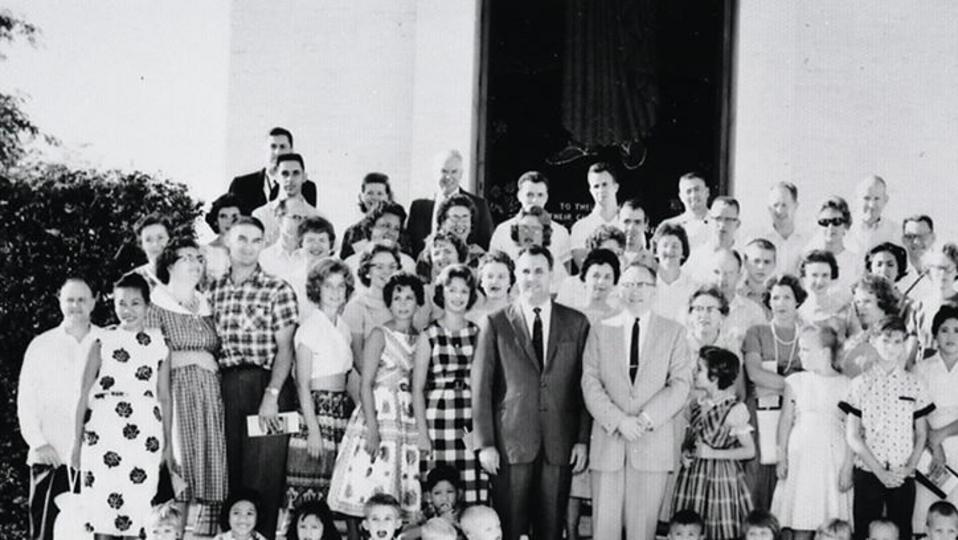
Church-history_American-Cemetery.jpg
On 28 April 1961, Around 100 Latter-day Saints gathered on the grounds of the American War Memorial Cemetery at Fort Bonifacio as Elder Gordon B. Hinckley (then an Assistant to the Quorum of the Twelve Apostles) rededicated the Philippines for missionary work.© 2020 by Intellectual Reserve, Inc. All rights reserved.Amidst the rising sun and rows of grave markers, President Hinckley invoked a blessing “that there shall be many thousands who shall receive this message and be blessed thereby. … We pray that there shall be many men, faithful, good, virtuous, true men who shall join the Church.” A tiny seed was planted. Now nearly 60 years later, the tiny seed has grown into a "mighty tree" — like the mahogany trees that dot the forests of this island country.
On 28 June 1967, the Southern Far East Mission was divided to create the Philippines Mission, with Paul S. Rose as its first president. It was a huge mission covering the entire country, and work soon spread to eight of the major islands with great success. On 1 July 1974, the mission was divided to create the Philippines Cebu Mission from the Manila Mission, with Carl D. Jones presiding in Cebu.
From those two missions Church growth has continued, and today there are over 2,000 missionaries serving in 23 missions throughout the archipelago. The vast majority of these young adults are native Filipinos.
In 1983, the Church established a training center in a rented house in Greenhills, Manila where they could receive training beginning their missionary service. It expanded to two rented houses two years later. In 1992, the Church constructed its first facility in the country located across the Manila Philippines Temple, which accommodated 80 missionaries.
In 2011, the Philippines Missionary Training Center expanded its facilities to two new residency and classroom buildings, which increased its capacity to 144 missionaries. In 2012, the MTC complex expanded, adding an activity and gym facility. In 2017, two more completed buildings were added into the complex, which increased its capacity to 250 missionaries.

Philippines-MTC-min.jpg
Philippines Missionary Training Center© 2018 by Intellectual Reserve, Inc. All rights reserved.Today, the Philippines MTC welcomes missionaries from Hong Kong, Cambodia, Indonesia, India, Singapore, Pakistan, Sri Lanka, Taiwan, Thailand, Vietnam, Micronesia-Guam, and Mongolia. It also provides language training for English, Tagalog, Cebuano, Cambodian, Indonesian, Mandarin Chinese, Mongolian, Thai, Urdu, and Vietnamese.
Total Church membership in the Philippines is approaching 850,000, with over a thousand congregations meeting each week.
With continued Church growth, there was an increasing need for a temple to serve the faithful members, many of whom would save for years in order to travel to Hawaii or the U.S. mainland to have their marriage solemnized in a temple.
The announcement of the first temple in the Philippines was made on 1 April 1981, and on 25 August 1982, groundbreaking and site dedication for the temple took place. Located in Quezon City, Metro Manila, the temple came with great sacrifice from the local Saints, who financed a significant portion of the cost from small personal contributions.

On 25 September 1984, President Gordon B. Hinckley, then a counselor to the president of the Church, dedicated the Manila Philippines Temple. That temple serves half a million members in the Philippines, Micronesia, and Southeast Asia. It became the 29th operating temple of The Church of Jesus Christ of Latter-day Saints.
Responding to continued growth, in April of 2006 Church leaders announced the second temple in the Philippines, to be located in Cebu City. The ground was broken on 14 November 2007, with Apostles Dallin H. Oaks and Quentin L. Cook officiating. Elder Oaks had served as the presiding authority of the Church in the Philippines from August 2002 through 2004.
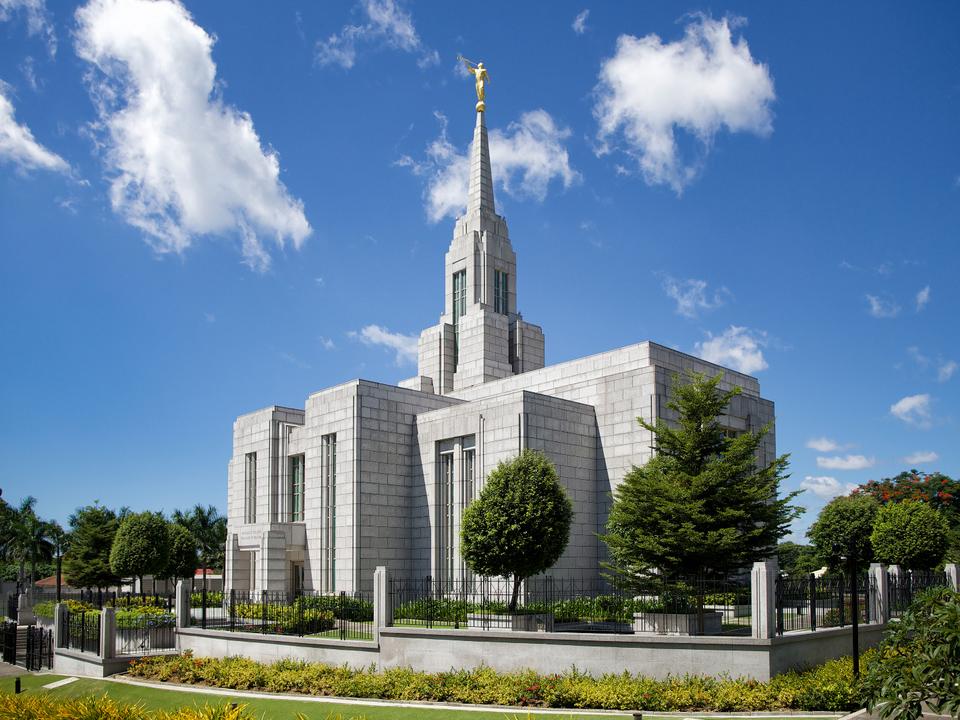
philippines-cebu-temple-1334564-print-compressed.jpg
Cebu Philippines Temple© 2020 by Intellectual Reserve, Inc. All rights reserved.On 13 June 2010, President Thomas S. Monson dedicated the Cebu City Philippines Temple. It became the 133rd operating temple in the Church. It serves more than 200,000 members in the Visayas and Mindanao.
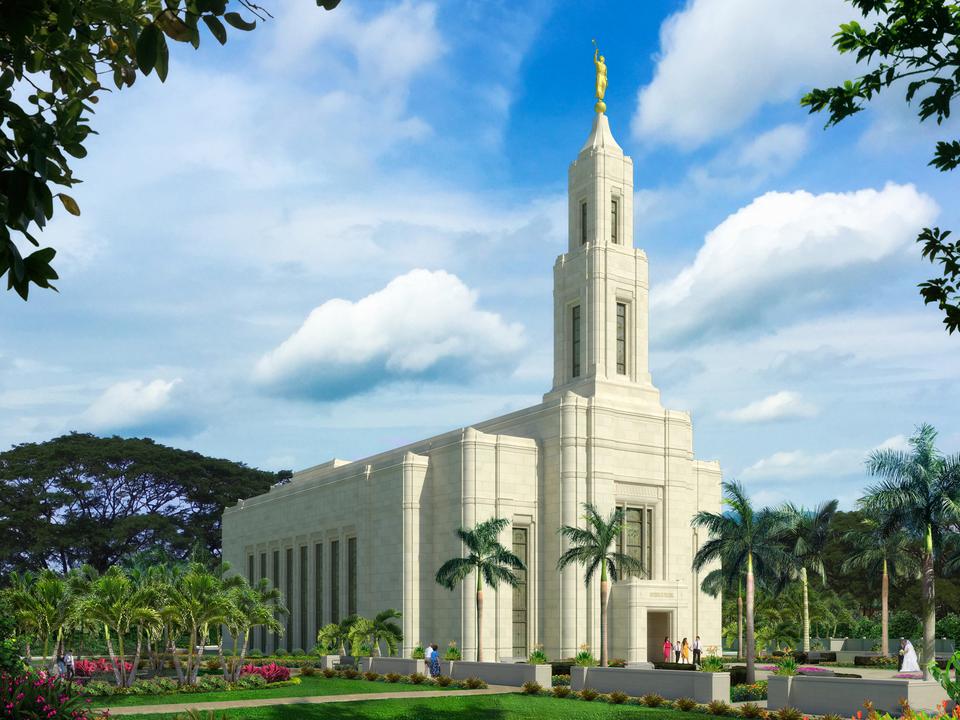
Temple
Urdaneta Philippines Temple Rendering2018 by Intellectual Reserve, Inc. All rights reserved.Four months later, President Monson announced the construction of the Urdaneta Philippines Temple. Elder Jeffrey R. Holland of the Quorum of the Twelve Apostles presided over the groundbreaking on 16 January 2019 to begin its construction. Upon completion, it will be the 3rd operating temple and will serve over 100 stakes and districts in the Luzon Island Group.
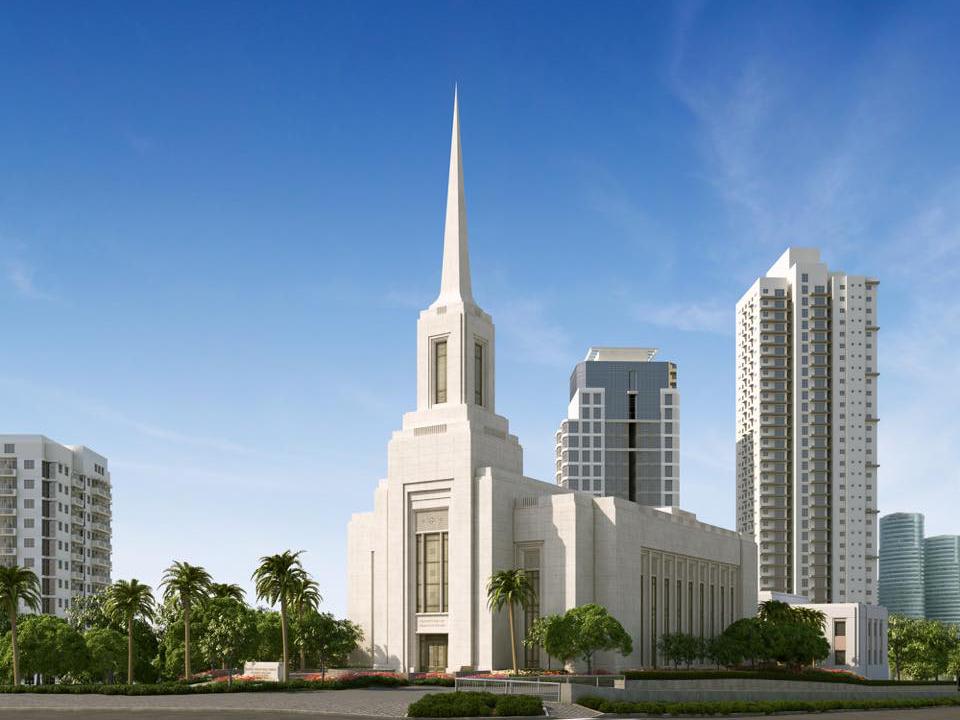
Four more temples were soon announced for the Philippines. On 2 April 2017, the First Presidency announced the Alabang Philippines Temple. Its groundbreaking is announced to take place in the second quarter of 2020. On 1 April 2018, President Russell M. Nelson announced the Cagayan de Oro Philippines Temple, the first temple construction announcement for Mindanao. In October of the same year, President Nelson announced the second temple in Mindanao, the Davao Philippines Temple. On 5 October 2019, President Nelson announced the plans for constructing the Bacolod Philippines Temple. It will be the second temple in the Visayas Group of Islands.
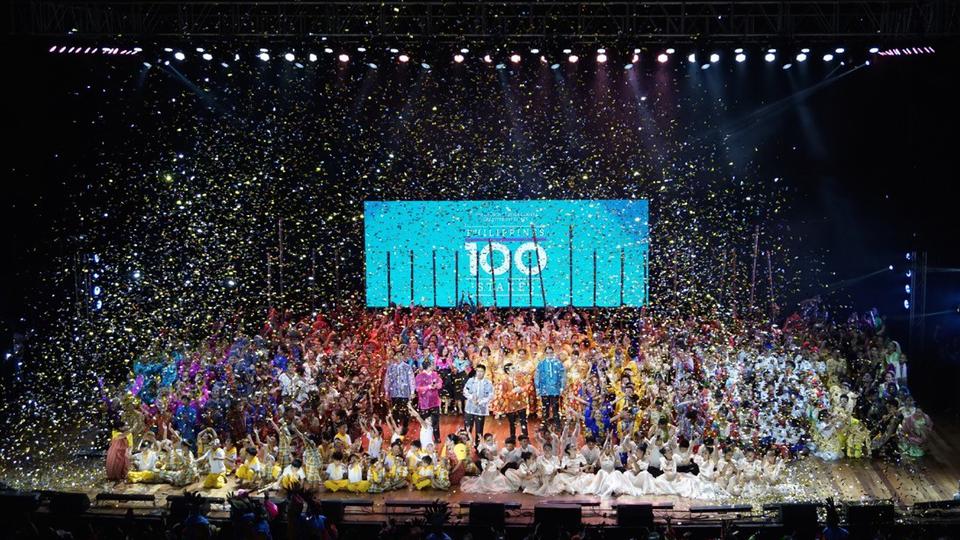
confetti2.0.jpg
The 100th Stake in the Philippines, the Mandaluyong Stake, was created on 10 September 2017© 2018 by Intellectual Reserve, Inc. All rights reserved.Another milestone the Church has reached was the creation of the 100th stake, which Elder Neil L. Andersen, a member of the Quorum of the Twelve Apostles, created on 10 September 2010 during a special conference held at the New Frontier Theater (formerly KIA Theater). The creation made the Philippines the fifth country in the world to have more than 100 stakes and the first in Asia. The first stake in the country was created on 20 May 1973.
In less than 60 years, The Church of Jesus Christ of Latter-day Saints in the Philippines has seen tremendous growth, and it all started because of the faith of every believer of the Restored Gospel of Jesus Christ.